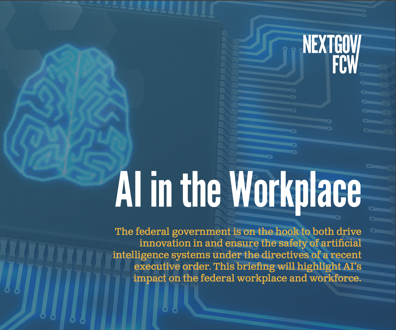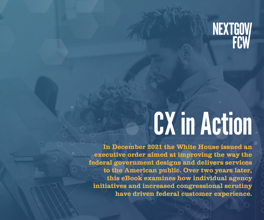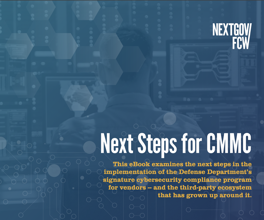Web 2.0: Rebooting the public square
Government leaders should be open to the role that collaborative technology can play.
In 2005, the American workforce passed a major milestone: A majority of the nation’s workers now come from Generation X or Generation Y, all born in 1965 or later.The same is decidedly not true of government employees. In 2005, only about 25 percent of federal employees were under age 40, and data from 2000 suggest that even fewer state and local government employees are members of the “alphabet generations.”The bad news is that, from a technology outlook, you’ll find even fewer Gen Xers or even Gen Yers among the decision-makers in government. And, for the most part, government leaders are definitely not techies.But the good news is that even we old guys are not unreachable or uneducable.The academy is a coalition of highly respected top policy-makers and management leaders who tackle the most critical, timely and challenging problems facing the government. Established 40 years ago and chartered by Congress, the academy is trusted across government to be objective and to find practical, innovative solutions by bringing the best thinking and experience to bear on government problems.From the beginning, the academy’s unique feature has been its more than 600 elected fellows, who guide and lead the institution and its work.Shortly after becoming president and chief executive officer of the academy last spring, I had the opportunity to hear a speech by academy fellow and board chairwoman Valerie Lemmie, who made her mark in public administration as a city manager in Cleveland. In her speech, she chided public administrators — herself among them — for having “unwittingly pushed citizens out of the public square.” She said they did this not out of spite or meanness or because of any lack of confidence in citizens, but rather “because we honestly believed we could and should fix their problems.”The reality is that our generation of public servants strongly believed and still believes that government should work for the people, but we did not really understand that we also needed to work with the people. The truth is today’s challenges are too big for government to solve alone.It is time, Lemmie said, to re-engage citizens in the work of government to solve the “wicked” problems of our times.Of course, solving the wicked problems of government is what the academy is all about. But the idea of building a public square that would hold 300 million Americans sounds like a pretty tall order.Coincidentally, shortly after that speech, I had dinner with an old friend and colleague, Kip Hawley, assistant secretary of the Transportation Security Administration. Not a techie by any means, Hawley is one of the most talented and creative managers I know. He has always been at the cutting edge of thought and action, willing to embrace any relevant tool if it solves a problem.After a great dinner and stimulating conversation, Hawley leaned over and, in a tone reminiscent of the famous scene in the movie “The Graduate,” said, “Jenna, I want to say one word to you. Just one word.”“Yes?” I said. “Are you listening?” “Yes, I am,” I replied. “Wiki.”At that point, just like Dustin Hoffman in “The Graduate,” I looked at him with a blank stare, as though he was from the planet Zoltar. I had no idea what he was talking about.Over the course of the next several weeks, however, I made it my business to find out.Today, we at the aca demy are convinced that collaborative technology has the potential to transform government in America, to tap into the expertise of people outside the hierarchy of any single agency or department, to make government more transparent, and to open the door to a broader array of experts focused on solving a particular problem or to citizens who want to contribute to making government work better.I know the concept of technology-enabled collaboration is old hat to readers of this magazine, and in fact, there are many places where collaborative wiki sites are already succeeding in government. The potential opportunities for its application are countless.The challenge will be to harness that significant potential and persuade nontechie government leaders to embrace the tool. The technology and the concept of broad collaboration it represents go against the natural hierarchy of government and the operating silos that hierarchy has created.To the nontechnical manager, technology is a double-edged sword. Information technology is not viewed as the solution to a problem but as a cost we must incur in order to keep up. Many government managers — and I count myself among them — do not readily understand technology.The good news is that more and more managers know more and more about technology, or at least they appreciate its value. And more and more technology experts know how to communicate that value in relevant terms.Those responsible for technology must have a seat at the policy table. That realization was an “a-ha!” moment for me in the past few years. They must know all about your business — your business model and the problems you wrestle with every day — to be more proactive because we are asking our technology experts to help us find solutions to problems we don’t even know we have.To illustrate, let’s go back to wikis for a moment.Let’s face it: There is nothing more compelling for a manager than improving the bottom line, whether we’re talking about the private sector, where the bottom line translates into increased profits, or the public sector, where it might mean meeting stringent budget targets and increased public expectations or gaining more flexibility to invest in people, programs or equipment. How does collaboration improve the bottom line?At the academy, our most expensive resource is our human resource. We control costs by finding more efficient methods of research, analysis, synthesis and quality control. Recently, one of our bright young research associates suggested — and then implemented — a wiki site to collect and analyze interview data, eliminating the time-consuming task of reading and coding responses from hard copy.Many academy projects rely, at least in part, on interview data, sometimes from hundreds of interviews. The nascent wiki project, though far from perfected, is projected to reduce data analysis time by almost 15 percent. Two of the wiki’s capabilities — the ability of our team members to collaboratively compile and edit interview notes, and the addition of automated search and analysis functions — saved five person-months of work on a single project. That helps the academy, and it saves our clients time and money.I was not thinking about our bottom line when I embraced the wiki. I was looking at it from the perspective of its public policy value. However, had our IT guy been a member of our senior management team — and assuming he is the right leader, familiar with our business challenges — he might have brought us a solution to a problem we did not know we had.IT executives often pride themselves on shaping solutions to the problems technology users bring them, which is great. But what if the user community isn’t aware of the universe of possibilities?
Editor’s note: Jennifer Dorn is president and chief executive officer of the National Academy of Public Administration. This article is an edited version of a speech she gave at the 2007 Executive Leadership Conference.
The promise of collaboration
Collaboration produces innovation /span>
At TSA, Hawley has launched an internal collaboration site, at least in part to provide a place where the 43,000 transportation security officers (TSOs) can share important information and techniques for improving the security of our country’s airports.
TSA’s Idea Factory is a secure intranet, restricted to registered users inside the agency. It has become an instant hit. Airport TSOs now share ideas for improving their workplace environment and strategies for making the traveling public more secure. Within a week of its launch, TSA employees had submitted more than 150 ideas, offered more than 650 comments and voted on ideas more than 800 times.
Of course, volume is not the only metric, but participation and information exchange are crucial.
Not just more but better
As a public administrator, I believe that the real power of collaborative technology extends far beyond the practical solutions that I’ve outlined. It is more than a new capability. It enables an entirely new way of thinking about the everyday management challenges of government. The real power of collaborative technology lies in its promise for bringing citizens back to the public square to re-engage them in the work of government and solving the problems of America and the world.
In his book “The Medici Effect,” Frans Johansson talks about the value of creating a space in which people from diverse fields of expertise can exchange ideas and solve problems. The wealthy and powerful Medici family played an important role during the Renaissance. They supported artists, philosophers and scientists whose combined intellect propelled the world out of the Dark Ages.
We might not think of ourselves as wealthy or powerful, but the tool that you understand and offer — collaborative technology — can be very powerful and offers a wealth of possibilities. In a nation of more than 300 million people, collaborative technology is the currency that people from all walks of life can use to come together and solve problems.
Ironically, governments and government managers — who are under constant pressure to deliver on behalf of citizens — might not be in the best position to tap the real power of that new tool. But some nonprofit organizations, including the academy, see the promise and are beginning to do so.
In colonial times, the public square could hold all the citizens of a town. It was a place for debate, for open discussion of ideas, problems and solutions. It was the epicenter of democracy.
Today, we are too many, too widely dispersed and often too busy to gather in a single location and engage in debate.
But you — today’s technology leaders in government and industry — have the tools that can bring us together in communities of interest and neighborhoods of concern. Increasingly, your challenge is to convince nontechie managers that you have an indispensable seat at the policy table. In this era of technology, you must be at that table to inspire innovative solutions to the problems of our times and help restore confidence in America’s government.
The promise of collaboration
Collaboration produces innovation /span>
At TSA, Hawley has launched an internal collaboration site, at least in part to provide a place where the 43,000 transportation security officers (TSOs) can share important information and techniques for improving the security of our country’s airports.
TSA’s Idea Factory is a secure intranet, restricted to registered users inside the agency. It has become an instant hit. Airport TSOs now share ideas for improving their workplace environment and strategies for making the traveling public more secure. Within a week of its launch, TSA employees had submitted more than 150 ideas, offered more than 650 comments and voted on ideas more than 800 times.
Of course, volume is not the only metric, but participation and information exchange are crucial.
Not just more but better
As a public administrator, I believe that the real power of collaborative technology extends far beyond the practical solutions that I’ve outlined. It is more than a new capability. It enables an entirely new way of thinking about the everyday management challenges of government. The real power of collaborative technology lies in its promise for bringing citizens back to the public square to re-engage them in the work of government and solving the problems of America and the world.
In his book “The Medici Effect,” Frans Johansson talks about the value of creating a space in which people from diverse fields of expertise can exchange ideas and solve problems. The wealthy and powerful Medici family played an important role during the Renaissance. They supported artists, philosophers and scientists whose combined intellect propelled the world out of the Dark Ages.
We might not think of ourselves as wealthy or powerful, but the tool that you understand and offer — collaborative technology — can be very powerful and offers a wealth of possibilities. In a nation of more than 300 million people, collaborative technology is the currency that people from all walks of life can use to come together and solve problems.
Ironically, governments and government managers — who are under constant pressure to deliver on behalf of citizens — might not be in the best position to tap the real power of that new tool. But some nonprofit organizations, including the academy, see the promise and are beginning to do so.
In colonial times, the public square could hold all the citizens of a town. It was a place for debate, for open discussion of ideas, problems and solutions. It was the epicenter of democracy.
Today, we are too many, too widely dispersed and often too busy to gather in a single location and engage in debate.
But you — today’s technology leaders in government and industry — have the tools that can bring us together in communities of interest and neighborhoods of concern. Increasingly, your challenge is to convince nontechie managers that you have an indispensable seat at the policy table. In this era of technology, you must be at that table to inspire innovative solutions to the problems of our times and help restore confidence in America’s government.
NEXT STORY: Circuit


